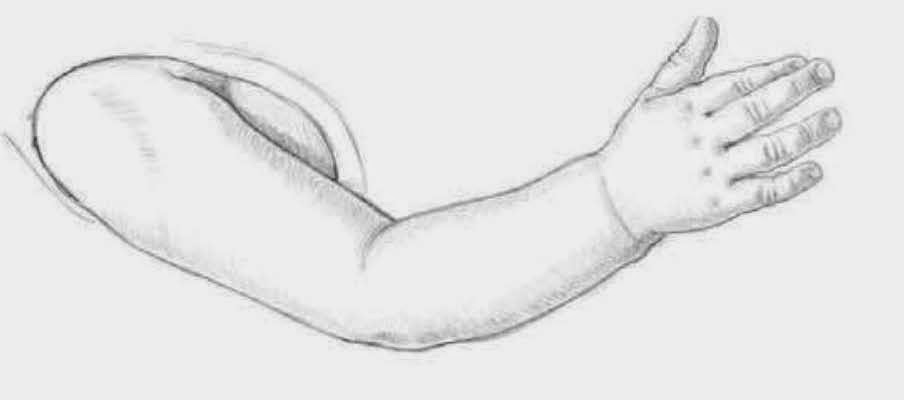UNDERSTANDING LIGHTING An important aspect of drawing-especially when drawing people-is lighting the subject. Lighting can have a dramatic effect on the figure's appearance, eliciting an emotional response from the viewer and setting the mood of the drawing. Subtle lighting often is associated with tranquility and can make a subject appear soft and smooth. This type of lighting tends to lighten the mood, generally lending a more cheerful feel to the composition. On the other hand, strong lighting makes it easier to see the contrasts between light and dark, which can add drama and make the subject appear more precisely formed. Longer shadows can mute the mood of a portrait, producing an air of pensiveness. Here strong shadows on the subject's face make her subtle smile seem reflective rather than content.

Step One First sketch the outlines of the figure on white drawing paper, using an HB pencil. Start with the torso, and then add the shape of the head. This is a three·quarter view of the body, but the face is in complete profile as the subject looks out the window. Block in the lines of the shoulders and chest; then add the window frame and sketch both arms. Draw the seat of the chair, and indicate the chair legs. Then add the subject's legs, with the sub- ject's right leg stretched out in front of her and the left leg pulled back toward the chair. Lightly sketch the entire back leg, "drawing through" the front leg to help position the leg correctly, and then erase any unnecessary lines.

Step Two Switching to a B pencil, begin refining the head by adding the features and the hair, erasing unneeded lines as the drawing progresses. Refine the shirt and jeans, adding details like the seam along the leg. Add the back of the chair, and refine the shape of the rest of the chair. Draw the lower window frame, and refine her fingers and the shapes of the shoes. The main concern at this stage is establishing the overall shape of the figure-shading to indicate lighting and mood will come next.
Step Three Using a very light touch, draw the edges of the shadows along the face, neck, arms, hands, and ankles. These lines will serve as a guide for adding the shading later. Also add this shading line to the shirt and pants, following your reference photo to outline areas where the lightest highlights will be, as this part of the paper will remain white. Begin to shade the hair, curving the strokes to follow its shape. Then shade the front of the chair.

Step Four Shade the skin using light, diagonal strokes, except where the highlight is strongest. Erase any remaining shading guidelines. Then draw the stripes of the subject's shirt, following the folds and curves of the fabric over her form and leaving the lightest areas white. After adding details to the shoes, use a 2B pencil to create dramatic contrasts in value-shading the inside of the left leg, adding a few more dark values to the hair, and drawing the outlines of the shadows on the floor. look at your reference photo frequently to check the placement and strength of your highlights and dark values. Then apply additional shading to the back and legs of the chair, and shade the window frame.

Step Five Switch back to a very sharp B pencil to add some details to the face. Using a 2B pencil, create more dark values in the hair and shade the stripes on the shirt. Darken the rest of the jeans using strokes that follow the form of her legs. With a sharp pencil point, carefully add a layer of shading to the darker areas of the skin. Reflected light from the shirt lightens her jaw line. Reflected light also appears on her arms and fingers; stroke across the arms to give them form. Shade the rest of the chair, leaving white on the chair legs where the light hits them. Because this portrait utilizes strong contrasts in light, larger portions of the drawing will remain nearly white-including the highlights on her legs, her throat, and her chest. A portrait that comprises varying degrees of shadows without these large areas of highlight would lose drama and intensity. Next shade the shoes, making them darker where the woven pattern is more detailed. On the floor, use diagonal hatching strokes, angling away from the light to create the shadows cast by the legs of both the subject and the chair.

Using Strong Natural Light The model for this drawing is sitting beside a f1oor-to-ceiling window. The sun is streaming through the glass from above and in front of her. The strong light creates visual interest by casting deep shadows and creating bright highlights.

























